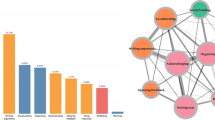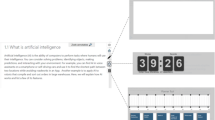Abstract
This paper implements a dynamic (i.e. temporal and local) research design for collaborative digital writing (CDW) in writing assignments in higher education. This research design builds on my paper “Temporality revisited: Dynamicity issues in collaborative digital writing research”, published in this journal (Engerer 2020). The design identifies current state-of-the-art approaches to digital writing and introduces 1) the components of text (the process and products of writing and learning communication), 2) external variables such as learning orientations and group composition, 3) an intermediate layer of time management that is related to organizing the assignment, and 4) the sphere of knowledge construction. The main modification, however, is the addition of four features specifically connected to time-related aspects: 5) micro-analysis, 6) dynamicity, 7) writer relevance and 8) source status. This dynamized research design is applied in a study of writing assignments carried out by the author with students of information science in the spring term of 2016. It is demonstrated how the temporal organization of a CDW process can be visualized and how central concepts such as Task structure, Reference structure and Final target structure are construed, operationalized and dynamically related to each other. Furthermore, a real-time analysis of sequential concept building is provided. The discussion shows that the study integrates all the above elements 1)-8) of a dynamic research design for CDW, although to different degrees. The study presented here can provide a general background for designing research in CDW and can inspire CDW researchers to capture in their research designs the dynamic, time-related features in CDW.





Similar content being viewed by others
Explore related subjects
Discover the latest articles, news and stories from top researchers in related subjects.References
Beck, E. E. (1993). A survey of experiences of collaborative writing. In M. Sharples (Ed.), Computer supported collaborative writing (pp. 87–112). London, Berlin: Springer-Verlag.
Berlanga, A. J., Brouns, F., Van Rosmalen, P., Rajagopal, K., Kalz, M., & Stoyanov, S. (2009). Making use of language technologies to provide formative feedback. In AIED 2009: 14th International Conference on Artificial Intelligence in Education Workshops Proceedings (p. 1–8).
Berlanga, A., Van Rosmalen, P., Boshuizen, H. P. A., & Sloep, P. B. (2012). Exploring formative feedback on textual assignments with the help of automatically created visual representations. Journal of Computer Assisted Learning, 28(2), 146–160. https://doi.org/10.1111/j.1365-2729.2011.00425.x.
Carless, D., Salter, D., Yang, M., & Lam, J. (2011). Developing sustainable feedback practices. Studies in Higher Education, 36(4), 395–407.
Cole, P., & Morgan, J. L. (1975). Syntax and semantics: Speech acts. New York: Academic Press.
Engelmann, T., & Hesse, F. W. (2010). How digital concept maps about the collaborators’ knowledge and information influence computer-supported collaborative problem solving. International Journal of Computer-Supported Collaborative Learning, 5(3), 299–319. https://doi.org/10.1007/s11412-010-9089-1.
Engerer, V. (2020). Temporality revisited: Dynamicity issues in collaborative digital writing research. Education and Information Technologies, (2020), 1–32. https://doi.org/10.1007/s10639-020-10262-9.
Guasch, T., Espasa, A., Alvarez, I. M., & Kirschner, P. A. (2013). Effects of feedback on collaborative writing in an online learning environment. Distance Education, 34(3), 324–338. https://doi.org/10.1080/01587919.2013.835772.
Hadwin, A. F., Bakhtiar, A., & Miller, M. (2018). Challenges in online collaboration: Effects of scripting shared task perceptions. International Journal of Computer-Supported Collaborative Learning, 13(3), 301–329. https://doi.org/10.1007/s11412-018-9279-9.
Kimmerle, J., Moskaliuk, J., Brendle, D., & Cress, U. (2017). All in good time: Knowledge introduction, restructuring, and development of shared opinions as different stages in collaborative writing. International Journal of Computer-Supported Collaborative Learning, 12(2), 195–213. https://doi.org/10.1007/s11412-017-9258-6.
Leavy, P. (2017). Research design, quantitative, qualitative, mixed methods, arts-based, and community-based participatory research approaches. New York: Guilford Publications https://ebookcentral.proquest.com/lib/kbdk/detail.action?docID=4832778#.
Pachler, N., & Daly, C. (2011). Key issues in e-learning: Research and practice. London: Continuum International Pub. Group.
Price, M., Handley, K., & Millar, J. (2011). Feedback: Focusing attention on engagement. Studies in Higher Education, 36(8), 879–896. https://doi.org/10.1080/03075079.2010.483513.
Prins, F. J., Sluijsmans, D. M. A., Kirschner, P. A., & Strijbos, J.-W. (2005). Formative peer assessment in a CSCL environment. Assessment and Evaluation in Higher Education, 30, 417–444.
Resendes, M., Scardamalia, M., Bereiter, C., Chen, B., & Halewood, C. (2015). Group-level formative feedback and metadiscourse. International Journal of Computer-Supported Collaborative Learning, 10(3), 309–336. https://doi.org/10.1007/s11412-015-9219-x.
Schwarz, B. B., Prusak, N., Swidan, O., Livny, A., Gal, K., & Segal, A. (2018). Orchestrating the emergence of conceptual learning: A case study in a geometry class. International Journal of Computer-Supported Collaborative Learning, 13(2), 189–211. https://doi.org/10.1007/s11412-018-9276-z.
Searle, J. R. (1975). A taxonomy of illocutionary acts. In K. Gunderson (Ed.), Language, mind and knowledge (pp. 344–369). Minneapolis: University of Minnesota Press.
Searle, J. R. (1985). Speech acts: An essay in philosophy of language. Cambridge: Cambridge University Press.
Tegos, S., Demetriadis, S., Papadopoulos, P. M., & Weinberger, A. (2016). Conversational agents for academically productive talk: A comparison of directed and undirected agent interventions. International Journal of Computer-Supported Collaborative Learning, 11(4), 417–440. https://doi.org/10.1007/s11412-016-9246-2.
Toulmin, S. E. (2003). The uses of argument. Cambridge: Cambridge University Press. https://doi.org/10.1017/CBO9780511840005.
Yeh, H. C. (2014). Exploring how collaborative dialogues facilitate synchronous collaborative writing. Language Learning and Technology, 18(1), 23–37.
Author information
Authors and Affiliations
Corresponding author
Additional information
Publisher’s note
Springer Nature remains neutral with regard to jurisdictional claims in published maps and institutional affiliations.
Rights and permissions
About this article
Cite this article
Engerer, V.P. Implementing dynamicity in research designs for collaborative digital writing. Educ Inf Technol 26, 2657–2684 (2021). https://doi.org/10.1007/s10639-020-10365-3
Received:
Accepted:
Published:
Issue Date:
DOI: https://doi.org/10.1007/s10639-020-10365-3




